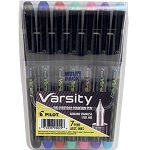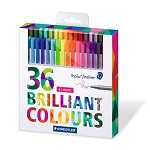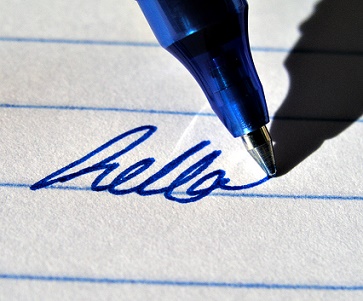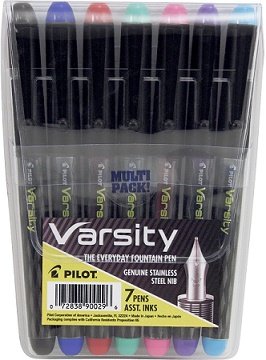best color pens for drawing
Best Colored Pens for Adult Coloring Books
Updated by Brandon F. on June 15, 2020
We typically focus on colored pencils here at www.bestcoloredpencils.com, but there is another large category of art supplies that are growing, particularly in regards to adult coloring books: colored pens! So what are the best colored pens? Similar to colored pencils, there are many factors that one should consider when looking for a set of colored pens.
We hope that our colored pen reviews will help shed some light on this subject and give you the information you need to make your next purchase. But before we get into it, we have listed our top choices in the table right below for those who want to get to the picks and skip over the reading. For the rest of you, hop below and let's learn about colored pens!
| Product | Pen Type | Ink Material | Price (Amazon) | Set Size |
|---|---|---|---|---|
Pilot Varsity Disposable Fountain Pens | Fountain | Water-based | $$$$ | 7 |
Paper Mate InkJoy 100ST Ballpoint Pens | Ballpoint | Water-based | $$ | 8 |
Staedtler Triplus Color Pen Set | Fiber Tip | Water-based | $$$ | 36 |
Artist's Choice 100 Gel Pens with Case  | Gel | Gel | $ | 100 |
What is a Colored Pen?
Surprisingly, quite a few people have never tried a colored pen for coloring purposes or adult coloring books. Sure, just about everyone has used a pen for writing, but how often do you think to try them out for coloring?
And many people who have tried using them for coloring have used the standard pens that they also use for writing! The definition of a colored pen is quite wide, and there is a lot more flexibility that exists in what can make a viable colored pen.
Our simple definition of a colored pen for art is a pen that produces acceptable ranges of color and can be easily applied while providing adequate control. That's it! Simple enough. For a more thorough explanation and definition, there are plenty of sources out there.
You will find a huge range of variables that exist from one pen to the next, and each one will have its pros and cons and personal preferences. Some pens will be better suited for portraits while others are better off being used for calligraphy. We will break down some of the most common types below. This should help you narrow down your search.
Types of Colored Pens
Fountain Pen

A fountain pen is one of the oldest types of pens and is considered a nib pen which contains an internal reservoir of liquid ink. The ink is drawn out via gravity and capillary action. These are very interesting pens in that they communicate very well with the user, allowing for great fluctuations in application thickness through the flexible nib.
You have likely seen beautiful cursive handwriting performed through the use of a fountain pen. A majority of their usage in art pieces will be in creating beautiful outlines that can have a varying thickness in a single pass but some people still find a use for them in coloring books or particular areas on other pieces of work.
Pros :
Great flexibility in ink thickness via the flexible nib
Extremely smooth application
Superb control is possible
Cons :
Can take quite a bit of practice to be familiar with
Difficult to apply consistent color in large areas
Can be quite expensive
Ballpoint Pen

The ballpoint pen is a pen that contains a small metal ball at its point which can dispense ink around it. Just about everybody has used a ballpoint pen before, especially since it is the most popular type of pen in the world! Interestingly, it also has a large following in the art scene, with many artists swearing by it due to its versatility.
This makes it a nice candidate for a coloring book or really for any artistic endeavor you are after. Similar to the fountain pen, color depth can be varied via application pressure (by pushing down harder it can compress the ball, allowing for more ink to flow by, although to a lesser extent). The larger application size also makes it much better for covering large areas. On the opposite end, gentle passes can also result in a stippling which can be good for creating color depth. However, it can be easy to produce blobs of ink that can smear or become too intense, especially in lower-quality examples.
Pros :
Typically very affordable
Extremely long ink life
Little maintenance
Cons :
Not as much freedom in application depth
Ink can be sticky and blobby
Fiber Tip Pen

Fiber tip pens have grown into what many people call markers, and colored markers deserve an entire article dedicated to them as well. Because of this, we will just focus on fiber tip pens. A fiber tip pen is a pen that contains strands of porous, pressed fiber such as felt that protrude from the tip and that has an internal ink source that will stick to and run up the fiber.
Being flexible fiber and not a hard material like in ballpoint and rollerball pens, there is a ton of freedom on how much color is laid down, and this is governed by a combination of applied pressure as well as angle. It also allows for a ton of color flow to be possible (whether or not you want it!). Because of this, it has a bit of a learning curve before you'll be able to jump in and use it for art.
Pros :
Great color output
Ink tends to dry quicker which allows for additional passes
Can greatly fluctuate application depth and shape
Cons :
Takes quite a bit of practice
Can go through ink very quickly
Rollerball Pen

A rollerball pen might seem very similar to a ballpoint pen, and you would be correct in assuming so. The primary difference is in the ink that is used (which we will discuss in greater detail below). Rollerball pens are also much newer than the other pens discussed up to this point, having only been around since the 60s.
For those that enjoy coloring with ball-based pens, you will get varying opinions on which are better between ballpoint and rollerball. We encourage you to try out both on your coloring books and see which you prefer. Some key differences are that rollerball pens tend to be easier to produce color and also typically have a much larger color range but they can be more prone to bleeding and smudging.
Pros :
Very smooth color application
Less harsh to use since not as much pressure is required
Very powerful color output
Great color selection
Cons :
Run out of ink quickly
Not as much flexibility in pass size and shape
Prone to smudging and bleeding
Gel Ink Pen

Gel ink pens are the "new kids on the block", having only been around since the 80s. From a design standpoint, they are very similar to rollerball and ballpoint pens, with the primary difference coming from the ink material. And in some cases, a gel ink pen IS a rollerball pen as some rollerball pens can handle gel as their ink.
The gel that is used produces extremely vivid and deep colors and the application can be quite smooth. However, you don't enjoy the flexibility and control that you see in fiber tip and fountain pens. And while the color choices are quite vast these pens can dry out rather quickly (which might be a good or a bad thing depending on use) and can have a relatively short lifespan.
Pros :
Some of the most vivid and deep color available
Extremely smooth and enjoyable application
Vast color selection
Cons :
Not as much control as other pen types
Short lifespan
Can dry out rather quickly
Types of Colored Pen Ink
Now that we have gone over the most popular types of colored pens, let's discuss what you put in them: the ink! There are a few different types of ink that are used and each has its own very unique characteristics.
Oil-based ink
Oil-based ink is likely the most common type of ink for coloring, as it has a huge variety of pigments that are used. This allows for plenty of color choices which are quite important in colored pens since blending and mixing of colors is very difficult if not impossible. Oil-based ink is noticeably thicker than water-based ink and is not acceptable for certain types of colored pens that are particularly narrow passages.
They are primarily used in standard ballpoint pens. You will notice that oil-based inks can be extremely deep and thick in color, but are also more prone to bubbling. They also will dry much faster which reduces the likelihood of smearing.
Pros :
Great color variety
Good, deep color application
Dries relatively quickly
Cons :
Not as controlled as water-based
Prone to bubbling
Water-based ink
Water-based inks are primarily used in fountain pens, rollerball pens, or any writing instrument with extremely narrow passages. This is because the pigments that are common in many non-water-based inks can potentially cause clogging issues. Water-based inks are known for being particularly smooth and fluid due to their less viscous nature which makes for a very unique and often enjoyable writing experience and coloring experience.
Due to not being able to use most pigments, the color choices are a bit lacking and you won't see some of the deep color tones that other types of ink can provide. This might make it tough to use by itself on a coloring book page, especially if there are a lot of areas to fill. Also, they take longer to dry which makes them more prone to smearing.
Pros :
Very fluid application
Good for precise work
Cons :
Not as many color choices
Colors aren't as deep
Takes longer to dry
Gel Ink
Gel ink is the newest type of ink being discussed. Gel ink is used almost exclusively in gel pens and is not intended to be used in any type of writing or coloring utensil not specifically designed for gel. The gel consists of pigments that are suspended in a water-based fluid. This results in an extremely thick compound that is noticeably denser than the other inks being discussed.
The technical term for this is "high viscosity", which means that it is more resistant to movement. It also allows for a much higher proportion of pigments and other additives. The result of this is an extremely thick and vibrant range of colors. In some cases, it might even be too thick and occasionally bleed through paper or overpower areas that you wish to keep the color subtle.
Pros :
Deepest, most intense colors
Huge range of color choices
Cons :
Can bleed through paper
Might struggle with detailed areas
Difficult to apply subtle levels of color
What to Look for in a Colored Pen
Now that we have introduced the different types of colored pens and colored pen inks, let's discuss what to look for in a colored pen you are considering purchasing. It is important to figure out what your specific needs are before purchasing a colored pen set. The characteristics of colored pens range much more than colored pencils, so if you don't perform your due diligence you might end up with a set that is not at all suited for your planned intention.
What Type of Application?
Do you plan on using your pens for highly-detailed works such as landscapes or portraits? Or are you simply looking for something  that can be suitable for adult coloring books where simply filling in spaces is all that is necessary? If you want more freedom in regards to both control and color intensity then we would recommend trying a ballpoint pen or fiber tip pen. If you are simply looking for impressive, deep color output then try going with a gel pen or rollerball pen.
that can be suitable for adult coloring books where simply filling in spaces is all that is necessary? If you want more freedom in regards to both control and color intensity then we would recommend trying a ballpoint pen or fiber tip pen. If you are simply looking for impressive, deep color output then try going with a gel pen or rollerball pen.
What kind of colors do you need?
Since coloring pens inherently don't blend well, it is important to have a pen for each color that you want or need. Some types of pens will have much wider ranges of color selections while others will be quite limited. Specifically, your oil and gel-based pens will have a much larger collection of colors to choose from than your water-based pens.
How clumsy are you?
This one might require taking a bit of a blow to your self-esteem, but if you are inherently clumsy then you might want to consider going with a colored pen that utilizes ink that dries much quicker. Any of your non-water-based pens will dry relatively quickly which reduces the likelihood of smearing.
Do you Expect Freedom in Stroke Depth?
Colored pens are unique from colored pencils in that some of them have a dynamic writing head. In other words, the head can physically change shape depending on applying pressure and angle. This can result in thicker strokes, thinner strokes, and everything in between. This is similar to a standard paintbrush and makes colored pens stand out from colored pencils, colored pastels, or any other artistic medium with a static or "fixed" head. Being able to manipulate the shape and size of the stroke can add a nice range to what is possible, but it can also be a bit challenging for a beginner.
Best Colored Pens
Below are some of our top choices for colored pens. To make things simple, we chose the best choice for each type of pen we have discussed. That isn't to say that there aren't plenty of other good options but these should serve you well if you want to give them a try. However, as always, we encourage you to experiment and try new products because different sets will work better for different people!
Best Fountain Pen
Pilot Varsity Disposable Fountain Pens, 7-Pack Pouch, Assorted Color Inks

One of the major weak points of fountain pens is their lack of color choices so this 7-piece color assortment should add a bit of variety. They also incorporate a more advanced liquid ink system which helps to ensure a smooth application. Other helpful features include a color-coordinated cap as well as see-through walls so you can see how much ink is left. The application is pretty straightforward and you can enjoy the unique feel of a fountain pen without having to dish out the typically extremely high asking price for them.
Best Ballpoint Pen
Paper Mate InkJoy 100ST Ballpoint Pen

These pens have a particularly low viscosity which means that application is very smooth and precise, which can sometimes be a challenge for lower quality ballpoint pens. The set, while a bit lacking in color, still gives enough variety to complement an adult coloring book page or fill in areas of another work. The tip is sized at 1mm so it is large enough for noticeable sweeps but still small enough for detailed areas. And like many ballpoint pens, they come in being extremely affordable.
Best Fiber Tip Pen
Staedtler Triplus Color Pen Set

We like the nice variety of colors with this set, particularly considering that they are water-based. The tips are very fine (.3mm) which makes them great for high-detailed areas but you will want to use something with a larger stroke for filling in bigger spaces. They also stand out from many water-based compounds in that the smearing is kept to a minimum so you don't have to stress as much over accidentally brushing your arm against wet paint. The price point is also more than reasonable for what you are getting.
Best Gel Ink Pen
Artist's Choice 100 Gel Pens with Case Extra Large Set

The bang for the buck with this product is just great. You get an enormous range of colors to choose from so you should be able to find a color that works for just about any piece that you have. The application is smooth enough, although you might feel that some of the higher-end brands produce a bit thicker and more pronounced color. That being said, the output is still plenty vibrant considering these are gel-based and for the price, we simply can't complain.
best color pens for drawing
Source: https://www.bestcoloredpencils.com/best-colored-pens/
Posted by: johnsonprowelly.blogspot.com


0 Response to "best color pens for drawing"
Post a Comment